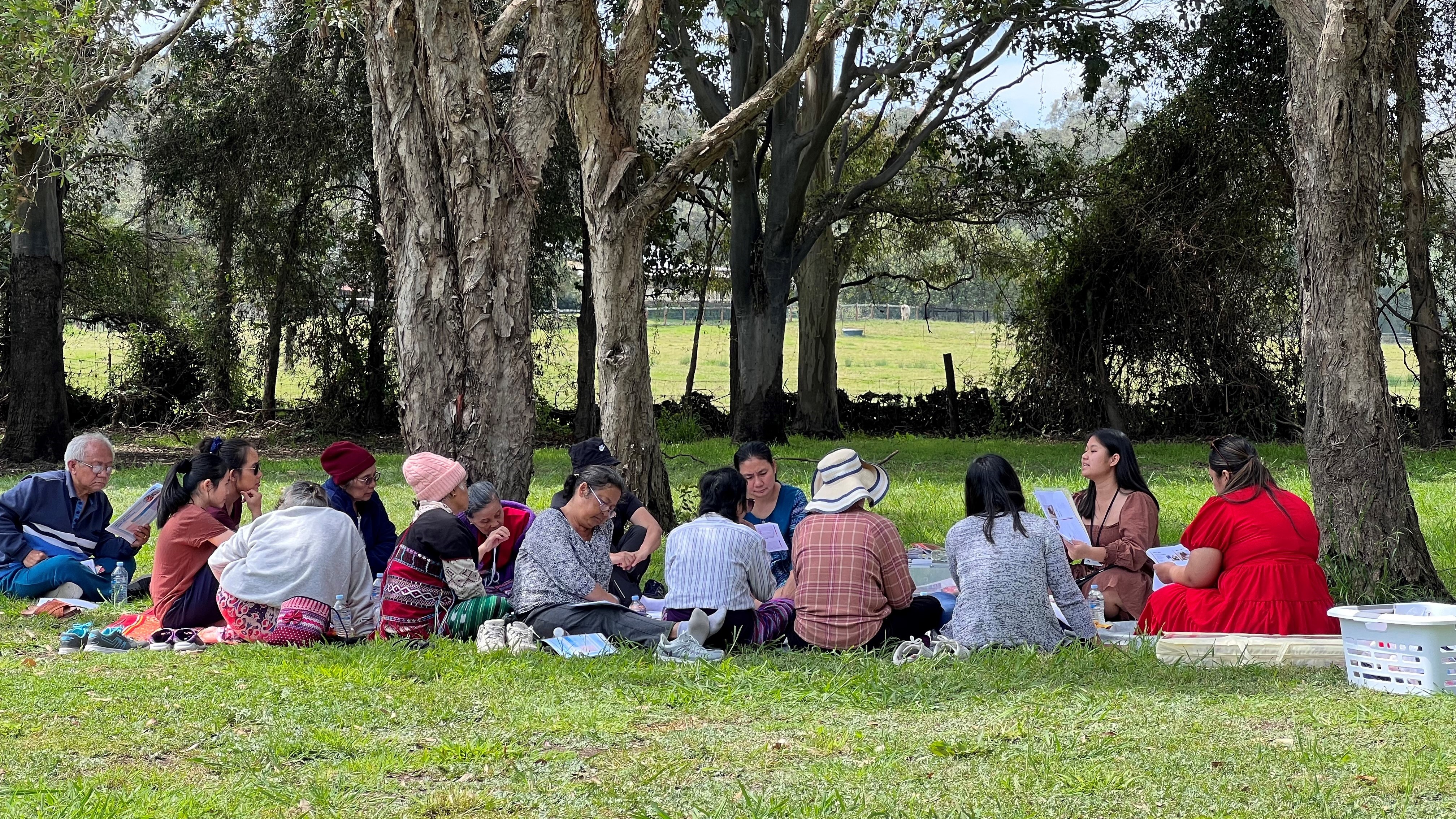
Getting accurate health information can be difficult at the best of times. But for people whose first language isn’t English, it can be especially difficult and come with added challenges, like knowing where to turn for reputable advice or learning how to navigate the Australian healthcare system. Addressing these barriers is why Health in My Language (HIML) was created.
HIML is a national health education program originally born out of the need to ensure that migrant and refugee communities could receive accurate, evidence-based information about the COVID-19 vaccine in their own language from trusted professional health educators.
It’s a collaboration between the Commonwealth Government and the Multicultural Centre for Women’s Health, allowing the not-for-profit organisation to scale its health education model to a national level, with the help of partner organisations in each state and territory. Here in Queensland, we were selected to deliver the health education program.
How does it work?
The program began in May 2022 to address vaccine hesitancy and other barriers impeding vaccine uptake, particularly in women of reproductive age. But, as specialists in education around safe relationships and sexual health, it’s also given our True educators an opportunity to respond to each community’s needs and provide education on a wide range of health topics that people form migrant and refugee communities don’t often hear in their native language.
This includes culturally appropriate information on women’s health and wellbeing, including cervical screening and breast health; men’s health; reproductive and sexual health; and healthy relationships, including consent, what unhealthy and healthy relationships look like, and how to get help if necessary.
“The amazing thing about this team is that they’re from these communities, so they can talk to people and see what they want and need,” said Gianna Parma, Project Coordinator—Culturally Responsive Health. “They get to make those connections and deliver the information in a way that’s accessible.”
Delivering sessions in language increases attendees’ health literacy and confidence and allows them to ask questions and feel comfortable in a way that wouldn’t happen if the sessions were provided in English.
“Whenever I’m in the community, the people really appreciate the resources in their language. They’re really surprised and appreciative. There’s a lot of information that people who have been here for some time still don’t know.” Moji Khakbaz, Bilingual Health Educator.
The impact of HIML on Queensland’s multilingual communities
Since the program began, our educators have delivered more than 26 sessions and reached more than 400 people from culturally and linguistically diverse backgrounds. The languages educators are working in span the globe: Arabic, Farsi/Persian, Hindi, Karen, Kurdish Kurmanji, Mandarin, Nepali, and Turkish.
It’s also allowed us to collaborate with a range of other organisations to deliver sessions, including Refugee Health Network / CCHEP Project, Islamic Women’s Association Australia, Trinity Family Support, and the Centre Against Domestic Abuse.
The impact of programs like HIML can’t be overstated.
“Increasing health literacy for people who don’t understand English or don’t have English as a first language means that some of the information that was delivered, they had no idea about,” said Iree Chow, Project Coordinator—Health Educators. “There were things they were experiencing that they didn’t have the right language to talk about until then.”
The program also gives attendees an opportunity to share their own positive experiences with the healthcare sector. It’s not uncommon for someone to book an appointment to see a health professional after a session because they’re able to make a more informed decision, said Sini Sivanandan, Bilingual Health Educator.
“It helps because not only do people have an educator like me there, but they also have participants sharing their own service experiences and encouraging the others to access services," she said.
That sense of camaraderie between educator and participants is important, the educators say. “We’re not health professionals. When participants go to the doctor, sometimes they’re rushed, they use jargon, they don’t get the interpretive services they need,” said Haybluth (Blu) Twayjaw.
“But when a health educator comes in, it’s like they have a friend who is trained in this area who they can talk to and spend time with. It’s not the feeling they have when they’re going to the doctor something is wrong with them—with us, it’s just a conversation.”
It’s not just the communities we’re serving that benefit from this program—our staff at True does as well.
“Having a team of eight women of all backgrounds working on one team is wonderful to see, because we’re not a specifically multicultural organisation. That’s something that’s been really great for True to have, and I hope that leaves an impact to keep doing this work and seeing the value of that work,” said Gianna.
The future of HIML & bilingual health education
Currently, our HIML grant is through December 2022. While we’re hopeful our grant might be renewed past the initial deadline, we’re thrilled by what our educators have achieved and hope it opens more doors to delivering health information in language and addressing some of the areas that can still be improved.
“Because we’ve come from a refugee or migrant background, we very much appreciate the services Australia provides us, but we often look past the fact that there are gaps,” said Blu. “There are so many gaps that need to be filled and things that need to be improved—because the Australian government is doing well, but it could still be better.”
Alongside HIML, we run Culturally Responsive Health. Through this long-term education program, we work with healthcare professionals, community workers, and interpreters/translators to get training and resources around communicating with clients from refugee and migrant backgrounds. Our goal is always to help make accurate health information available to people in a way they understand it.
As Sini put it, “Just to see that smile on people’s faces when they see information in their language—it’s very powerful.”